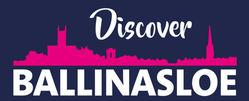|
By Ray Jordan After Napoleon Bonaparte's defeat at Waterloo the French Monarchy was reinstated leading to a period of fear and uncertainty among the French people. This ended in 1848 with the Declaration of The Second Republic. The Ganaveen farm visitor Prince Joseph Charles Napoleon Bonaparte was elected to the new Assembly along with his older cousin Prince Louis who was voted in as President.
His cousin our visitor, was part of The Emperor's Government and as such was a very important person indeed. His reasons for visiting Ireland for a holiday in 1857 were to pay a visit to Donegal where his father's first wife Betsy Patterson's father had come from, and secondly he wished to see the Great Telescope at Birr. Having explored his Donegal connections Prince Joseph sailed on his own Yacht from Derry to Galway. On mooring off Galway he was greeted by a 21 Gun Salute from a Naval ship anchored in The bay. This caused great panic in The Cladagh where the people thought the French were invading! He boarded a train at Galway and was met at Ballinasloe by the great and the good of the town and escorted to a dinner in his honour. His Confessor The Abbe Cruise who had Ballinasloe connections told him the story of the Battle of Aughrim in 1691 and its link to General San Ruth and the French fallen at that most deadly affair. He continued his journey by coach to Birr where he viewed the Telescope called Leviathan which was in it's time the largest such instrument in the world. On this occasion he continued his journey in stages to Limerick where his yacht was moored waiting to take him to Kerry and later to Cork and home to France. The Emperor on hearing the Aughrim story from Joseph, ordered a set of vestments to be made in Paris and they were delivered to The Parish Priest of Aughrim in 1858 around the time St. Michaels Church was dedicated. The vestments bearing the Imperial Symbol of The Bumble Bee may be seen in Aughrim and Loughrea museums. Prince Joseph's second visit in 1860 was for a far more down to earth reason and was motivated by the Emperor's wish to improve French agricultural practises which were uneven and led to food shortages. On this visit Joseph arrived in Dunlaoire or Kingstown as it was known then and spent his first day at The Model Farm attached to The Albert College which has since become part of U.C.D. It is recorded that in the afternoon he dined at The Gresham Hotel before rejoining his Yacht. Early the following morning he travelled to Westland Row by train and from there to The Broadstone Station by Cab. It was noted he personally chose the poorest cab for himself. From The Broadstone Station he travelled to Ballinasloe and this time was met by Lord Clancarty who treated him to breakfast at Garbally. After breakfast he escorted him to Lismanny to meet Alan Pollok the owner of the most modern and innovative Farmstead at Gannaveen. This farm and the one at Lismany were arguably the most modern in the world at that time and was developed and owned by a Scotsman named Alan Pollok. He had bought 39,000 acres mostly of the Eyre's Estate in Galway from The Encumbered Estates Board and had intended breaking it up into 4,000 acre units for renting out to suitable tenants. Even by today's standards it was remarkable, and on the cattle side it could in one Byre - house over two hundred in two rows of individual pens accessed in the centre for feeding via individual troughs and at the rear for disposal of waste material. The by-product of the animals was turned into gas and was used to light the sheds and also to power various milling engines. An article the following year in The Dublin Builder of Nov.lst 1861 gives a fuller description of the scale of Pollok's undertaking which had attracted French attention and resulted in the visit of such an important observer. Apart from some fine stone buildings, there is very little evidence to be seen today of the experiment set up along the lines of Scottish Improvers. Prince Joseph returned to Ballinasloe where Lord Clancarty showed him various other farms and then departed by train for Dublin. Having made his way back to Dunlaoire he boarded his yacht and set sail for France. Even by today's standards he accomplished a lot in two days and this mind you in 1860!
0 Comments
Leave a Reply. |
CLICK HERE to read the Latest Ballinasloe News Articles
June 2024
|
The Town Team was set up by BACD Ltd. to revive the fortunes of Ballinasloe and its hinterland. With the main focus to build on the town’s many strengths, change existing negative perceptions and bring about measurable improvements in the town centre economy and its wider social value.
|
Ballinasloe Area Community Development Ltd.
Ballinasloe Enterprise Centre Creagh Ballinasloe Co. Galway |
All generic photos and images have been sourced and are free of copyright or are clip art images free of copyright. Photos of Ballinasloe have been donated by BEC. If you have any photos that you would like included on the website please email us
Copyright © All rights reserved, 2024 BACD


 RSS Feed
RSS Feed
